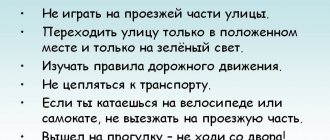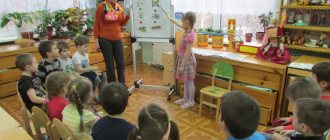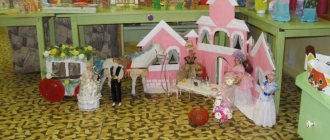Types of teachers' councils
In Soviet times, the processes of education, upbringing and development of preschoolers took place according to standard programs. Today, educators have the right to choose. It is discussed at special meetings, which are held with the participation of the entire teaching staff.
According to the Federal Law “On Education”, it is customary to hold at least 4 assemblies. All discussions are recorded. In accordance with all requirements and standards, several types of teacher councils are held in kindergartens. These include:
- the kick-off meeting is also the first one. It is held, accordingly, at the beginning of autumn. The main tasks and goals of the event are to sum up the results of the past summer period - holidays and approve a new plan and operating mode of the preschool institution. Senior educators and educators prepare especially carefully for it. During training, teachers develop new programs for the development of children, create all the conditions for the implementation of their goals, and at the same time collect and draw up all the documentation. The task of the senior teacher as part of the orientation council is to give recommendations to other teachers on drawing up programs, and at the same time select methodological literature;
- The current teacher council in kindergartens must be held twice a year. The purpose of the meeting is to discuss the work of the teacher. Preschool employees prepare carefully for the event, preparing open reports on their activities. These reports contain topics that meet all the goals and objectives set at the kickoff meeting. During the teacher’s speech, he shares his experience, the results of the work done, and reports on the effectiveness of his activities. The topic of teacher councils is discussed in advance. As a rule, they are similar from year to year. The most frequently asked questions are on the following topics:
- Development of children of different ages through play.
- Individual approach to the development and education of students.
- Environmental, labor, aesthetic or humane education for preschool children.
- Gender approach to the educational process;
- final meeting - the event takes place at the end of the academic year - in May or June. The purpose of the event is to summarize the results of the past period, draw conclusions and groundwork for the coming year. Before holding the council, kindergarten workers carry out various types of work: interviewing parents, filling out pupils’ development cards. Specialists such as psychologists, speech therapists, health workers, and music directors prepare a report for each child. Taking into account all the performances, a work plan for the summer period is drawn up, and activities for the next academic year are predicted.
Types, forms and methods of organizing pedagogy. councils in preschool educational institutions
“Types, forms and methods of organizing pedagogical councils in preschool educational institutions”
In the context of the implementation of the Federal State Educational Standard for Preschool Education, the problem of improving the quality of the educational process is most acute and worries the heads of many preschool institutions. It is relevant for both beginners and experienced managers.
One of the most important forms of management of a preschool educational institution, improving the quality of the educational process and professional skills of teachers is pedagogical councils.
The pedagogical council in a preschool organization is a permanent collegial body for managing the entire educational process, which solves the specific tasks of the preschool education program. The main goal of the pedagogical council is to unite the efforts of the staff of a preschool educational institution to improve the level of the educational process, use the achievements of pedagogical science and best practices in practice.
The academic year is determined by the cycle of pedagogical councils. The topics of teachers' councils are indicated in the annual plan of the preschool educational institution. The most common structure of the annual cycle is formed from three components
: an orientation teacher council, two (three) thematic ones and one more final one.
Meetings of the pedagogical council are convened, as a rule, once every two months in accordance with the work plan of the preschool educational institution. If an emergency occurs in the area or directly in the kindergarten (accident, injury to a child or teacher, quarantine, child theft, etc.), an unscheduled pedagogical council
.
Types of pedagogical councils
:
· Installation;
· Thematic;
· Final.
Installation pedagogical council
provides for an analysis of the work of the teaching staff for the past academic year, approval of the annual work plan for the new academic year, summing up the results of the work for the summer recreational period, approval of programs and technologies on which the preschool institution will operate, assessment of readiness for the academic year and other issues of organizing educational educational process. The mission of the orientation pedagogical council is to encourage teachers to improve their teaching skills and create conditions for the comprehensive development of the child’s personality. This teacher council is held in August, after the traditional district August conference.
Contents of thematic teaching councils
is determined by an annual task or a problem that has arisen that kindergarten teachers need to solve.
In our preschool educational institution, three thematic pedagogical councils are traditionally organized: two pedagogical councils on annual tasks
(usually in December and March), one
based on the results of monitoring
at the beginning of the school year (in October).
The purpose of the final pedagogical council
— discuss with teachers the analysis of work over the past academic year, identify and identify developmental problems, the solution of which is the only way to develop a preschool institution and the professional growth of kindergarten teachers. Usually the final teachers' meeting is held at the end of May.
Currently, a wide variety of technological options for Teaching Councils are used using various forms and methods. Forms and methods of holding teacher councils
– the organizational mechanism that ensures the activity of teachers.
Forms of organization of
pedagogical councils:
a) Traditional pedagogical council
— this is a teachers’ council with a detailed agenda, held strictly in compliance with the rules of all issues discussed and making decisions on each of them;
b) Intensified (modernized) teachers' council
using separate methods of activating teachers. During such a pedagogical council, the chairman can offer participants various active methods, for example, solving a situational problem on a topic or using the “game modeling” method;
c) Non-traditional teachers' council.
It is carried out, for example, in the form of a business game, conference, etc. Preparation of this teacher council requires writing a script, dividing participants into teams and defining roles. However, it must be remembered that the result of the work of any teachers’ council should be the adoption of decisions to improve the work of the team.
No matter what form the teacher council takes, it is important that all its participants are active, express their point of view, doubts, and share their work experience. And the head of the methodological service always faces the question: “How to get rid of the passivity of individual teachers?”
There are methods to activate teachers
when conducting methodological activities that help the methodological service in working with personnel.
I offer you a description of the most popular methods and forms of activation
, which will help in preparing and conducting the next pedagogical council in a preschool institution.
1) Imitation of specific pedagogical situations.
There are 3 main types:
— illustration situations
(simple cases from the practice of preschool education are described and solutions are immediately given);
— exercise situations
(they require some actions by the participants in the PS meeting, for example, drawing up a summary plan, filling out some table of how children have mastered a particular section of the program, etc.);
- assessment situations
(the problem has already been solved, but teachers are required to analyze it, evaluate it, justify their answer, for example, some action of the teacher or parents in a specific situation).
The most difficult of the listed activation methods to apply are assessment situations
.
Everyone expresses their point of view, their decision, and thus a dialogue
(free exchange of opinions, without dispute) or
discussion
(public discussion of a controversial issue; a mild type of dispute in which it is necessary to come to a common position).
2)
Discussion of two opposing points of view.
The head of the methodological service offers two points of view on the same problem for discussion. The teacher must express his attitude and justify it. For example: “Do kindergartens need standards?”
3)
Training in practical skills.
This method is very effective, but it must be thought through in advance, and it must be decided which teacher can be entrusted with it. It should take up to 5 minutes in duration. It is better to give a training element from work experience (for example: training in “mnemonics”). Conducted like a master class.
4)
Solving pedagogical crosswords
helps clarify teachers’ knowledge on a specific topic (for example: “FEMP for preschoolers in preschool educational institutions”), develops their horizons, and therefore affects the quality of work with children.
5)
Work with instructive and directive documents.
Educators are invited to familiarize themselves with this or that document in advance, apply it to their work and, highlighting one of the areas, think through a work plan to eliminate their shortcomings. Everyone does this work independently, and at the teachers' council different approaches to solving the same problem are discussed.
6)
Analysis of children's statements, children's behavior, creativity.
The head of the methodological service prepares the material. These could be tape recordings, a selection of children's drawings or crafts, or records of their behavior. Teachers get acquainted with the material, analyze it, evaluate the skills, development, and education of children, and formulate several specific proposals to help the teacher working with these children.
7)
The method of game modeling
increases interest, causes high activity, and improves skills in solving real pedagogical problems. For example: “What do we know about children’s rights?”
 Brainstorming method
Brainstorming method
. There are several known brainstorming techniques:
— Brainstorming.
Team members, for example, are puzzled by finding ways to solve a problem. All teachers are divided into 2 groups. The first group - “idea generators” - must, within a short time, offer as many options as possible for solving the problem under discussion. However, they do not have the right to discuss these options, rejecting or agreeing with them. The second group - “analysts” - receive lists of options from the first group and, without adding anything new, consider each proposal, choosing the most reasonable and appropriate. Selected offers are grouped and updated.
— Phillips' brainstorming
. All participants are divided into groups of six people and brainstorm for six minutes. After this, all the most interesting ideas are transferred to other groups for imagination and idea generation by the association. These secondary ideas form the basis for solving substantive problems.
— “Council of Pirates.”
This game is best played in small groups (6-10 people). Everyone, except the expert (senior teacher), sits in a circle and assigns roles - from the cabin boy to the captain of the wrecked pirate brig. The topic is discussed starting from the youngest in status to the eldest. Everyone must come up with a new idea. Anyone who cannot formulate it is “eaten” by hungry pirates, that is, he drops out of the game. Several circles are played until the most prolific (experienced) “pirate” remains.
9)
When organizing the exchange of experience between educators, Belaya K.Yu.
proposes the use of a “heuristic conversation”,
during which individual provisions of the studied methodological literature are revealed in more detail, explanations are given on issues that are of greater interest to teachers, errors in judgment are identified, the degree of understanding and assimilation of new information is revealed.
10)
“pedagogical battle”
method is used in the same way as a component of the teachers’ council. Participants are divided into two groups. The leader prepares questions in advance, each of which is addressed to both groups at once. You are given 1 minute to think about it, after which the answers are listened to one by one and assessed using a 5-point system, taking into account the speed in preparing the answer, its correctness, brevity and originality, and the ability to give justification.
11) Case method
(from the Latin casus - a confusing or unusual case) - a method of analyzing situations, the essence of which is that listeners are asked to comprehend a real life situation, the description of which simultaneously reflects not only some practical problem, but also actualizes a certain set of knowledge that is necessary learn when solving this problem. At the same time, the problem itself does not have clear solutions. This method has much in common with the problem-based learning method. The technology of working with a case involves two stages. The first stage is individual work, the purpose of which is to prepare for the second stage - collective case analysis. The second step should be aimed at diagnosing the problem situation, the main task of which is to isolate from the content of the case all the parameters of a specific problem situation.
The time spent working with the case is limited to 30 or 60 minutes. After time, the trainees should be presented with substantiated conclusions and an action plan, as well as solution options.
Most of the described activation methods
will lead to the use of
debate
(exchange of opinions),
discussion
. To organize them, a certain algorithm is used:
- opening speech by the chairman of the joint venture, familiarization of those present with the thesis being put forward, approval of the regulations and, if necessary, introduction of the participants in the debate;
— holding a vote to identify the majority opinion on the thesis;
— the chairman giving the floor to the leader of the 1st party and his speech in support of the thesis;
- the chairman giving the floor to the leader of the 2nd party and his speech against;
- alternately giving the floor to those wishing to speak in support of a particular opinion and their speech;
— summing up the arguments by the leader of the 1st group;
— summing up the arguments by the leader of the 2nd group;
— holding a vote (preferably open) to identify common opinion;
— making decisions based on voting results.
Selection of non-traditional (active) forms and methods
holding pedagogical councils depends on the level of pedagogical skills and qualifications of teachers and the head of the preschool educational institution; maturity and cohesion of the teaching staff, its interests, needs, requests; determined by the goals, objectives, content of the work of the preschool educational institution, and the specific state of the pedagogical process in a given preschool educational institution.
These methods help teachers find non-standard ways out of standard situations, think creatively and thereby raise their professional level.
Structure of the pedagogical council:
· The meeting begins with an analysis of the decisions of the previous teachers' council. This can be done by the head, the deputy head of teaching and learning, the senior teacher or secretary of the kindergarten pedagogical council, and an experienced teacher who is entrusted with this.
· Then the chairman indicates the relevance of the topic of the pedagogical council in general and for this preschool institution in particular.
· Next, the agenda and work regulations are read out. If members of the teaching council propose adjustments, then these changes are submitted for discussion by teachers. The agenda and regulations are approved.
· Speeches and other forms are held in accordance with the agenda. Each speaker can be asked questions by the chairman or members of the teachers' council.
· A discussion is being held on the topic of the teachers' council.
· In conclusion, a draft analyzing order and a draft decision of the teachers' council are proposed, which are discussed, supplemented and approved by voting. All points of the decision must be specific and have realistic deadlines.
· The final word belongs to the chairman of the teachers' council. He once again sums up the work done and the outcome of the teachers’ council (evaluation of its preparation, personal participation of teachers, etc.).
One of the most important procedures of the pedagogical council is the decision-making procedure
. The draft decision is prepared in advance by the methodological service and put to a vote after preliminary discussion and the introduction of additions and amendments.
Upon completion of the pedagogical council, a package of documents is formed consisting of:
• plan for holding a pedagogical council;
• materials of preparatory work;
• a protocol of a meeting;
• speeches of participants;
• decisions of the pedagogical council.
At the present stage, a printed version of maintaining protocols is used. Each protocol is signed by the chairman and secretary, the pages are numbered, stitched, and sealed.
Pedagogical Council
- this is a meeting of teachers who really consult, and do not “meet”, where each member of the team has the right to be heard, where common problems are solved together, where new beginnings are launched and the work already done by the teaching team is summed up. We try to structure meetings in such a way that the council brings professional satisfaction, new knowledge and skills, confidence, and a desire to implement what is planned.
Rules for conducting pedagogical discussions
Hosting an event is not that easy. You need to know the key rules. Teacher councils in kindergarten should be held as follows:
- the entire teaching staff of the preschool institution must be present;
- must pass at least 4 councils throughout the year;
- the schedule of meetings is regulated at the legislative level;
- there should be several speakers;
- Minutes must be kept at every event. It will look like a stitched magazine. All entries will be handwritten and pages will be numbered. When filling out, all teachers presenting a report, the topics of their speeches, discussions and decisions are indicated. At the event itself, the secretary of the teachers' council writes a draft, and after 5 days presents the finished protocol;
- The results of teachers' councils must be maintained properly. The minutes indicate the date, number of the event, the number of all teachers present and absent teachers, the topic of the event, the agenda, the goals of the meeting, the results of the discussion achieved;
- The topics of all councils are regulated by the annual plan of the preschool educational institution at the beginning of each academic year.









